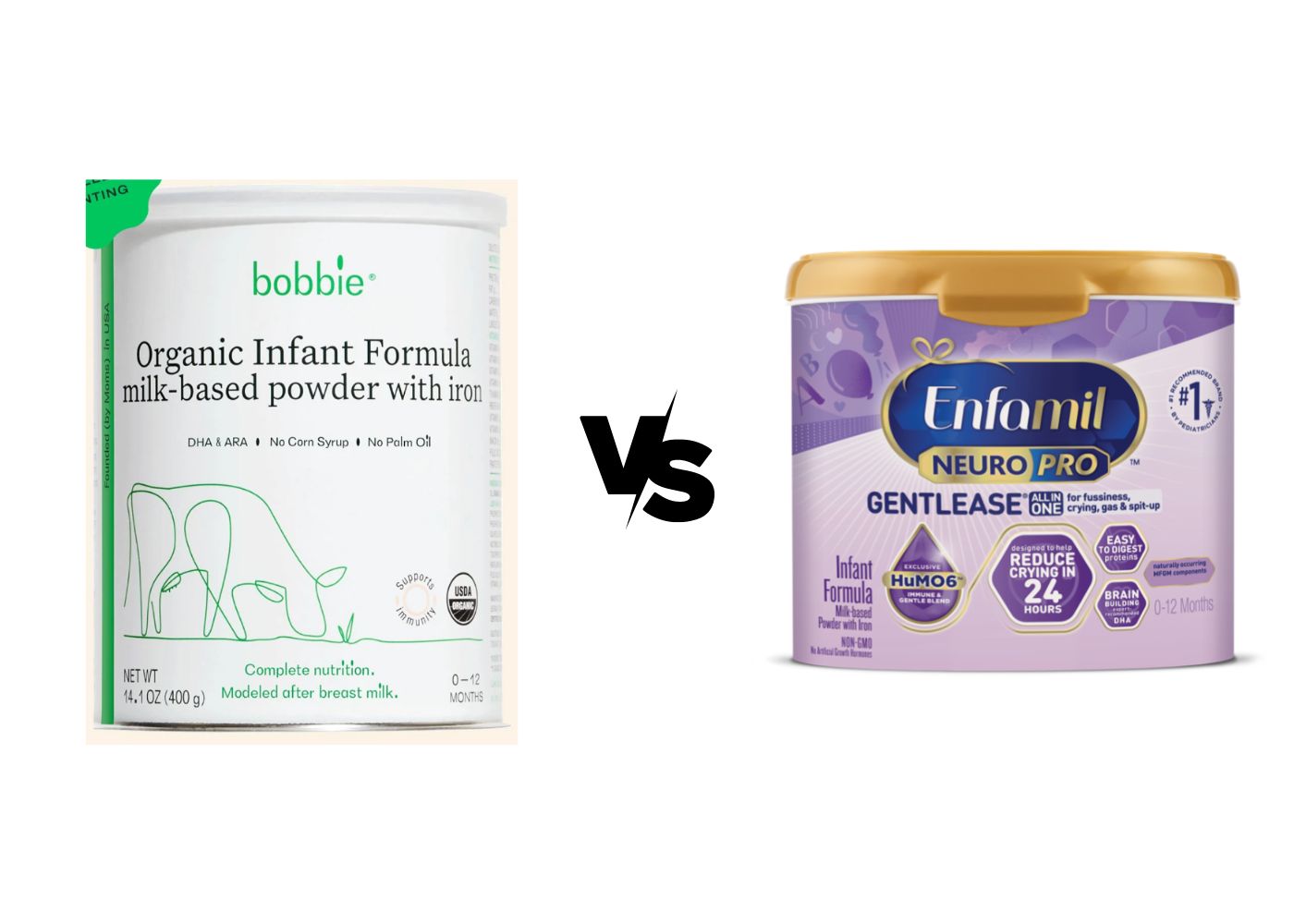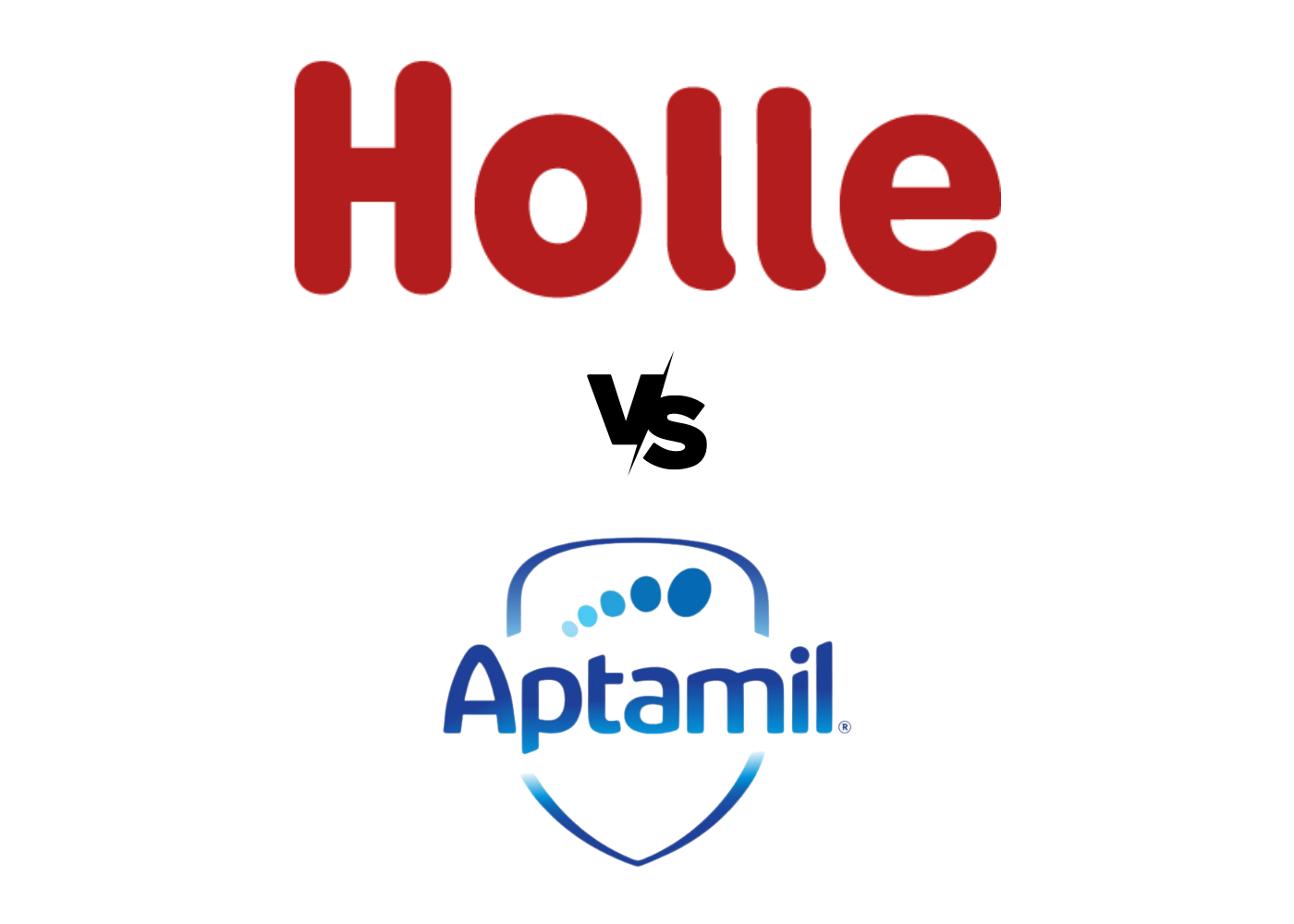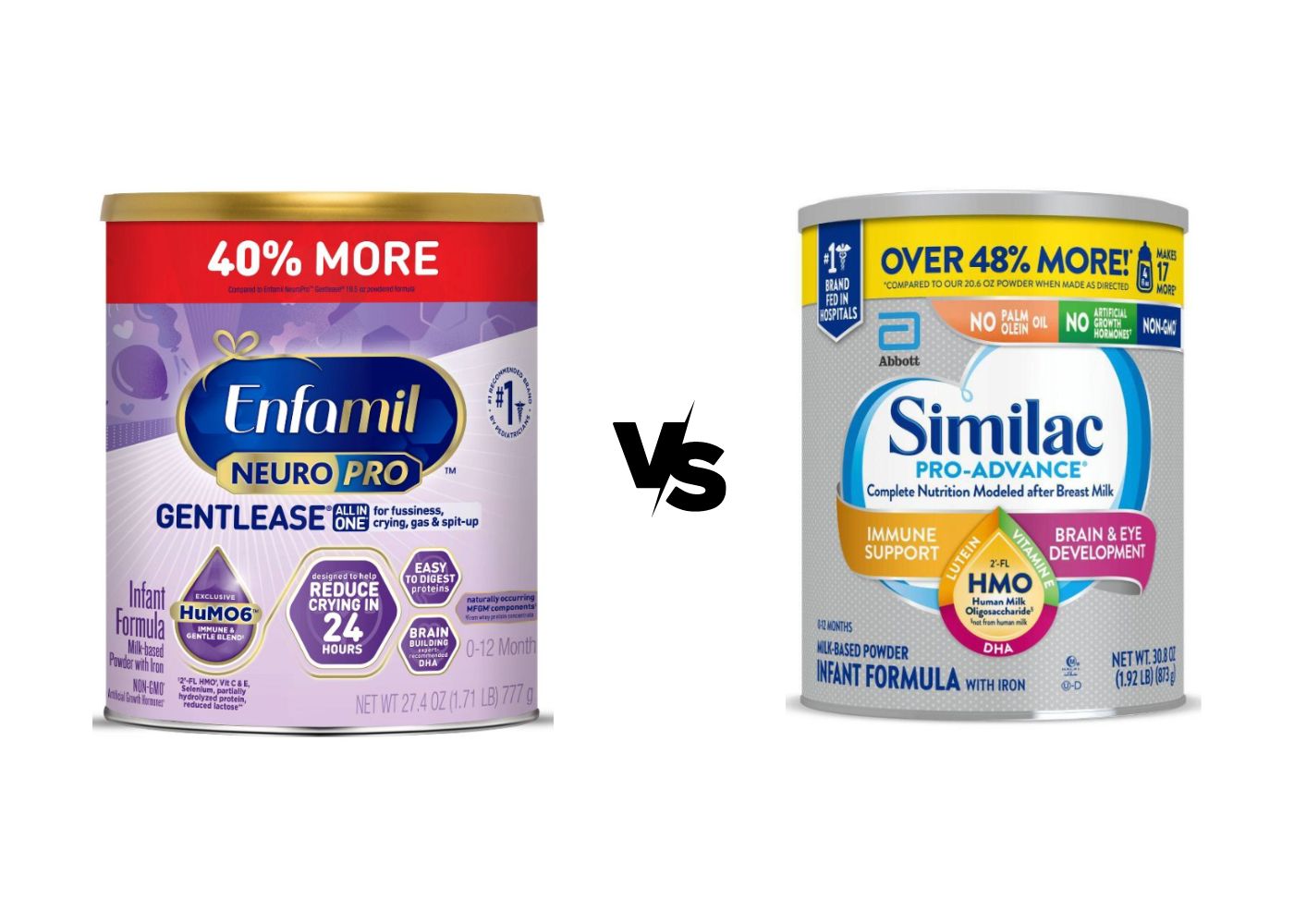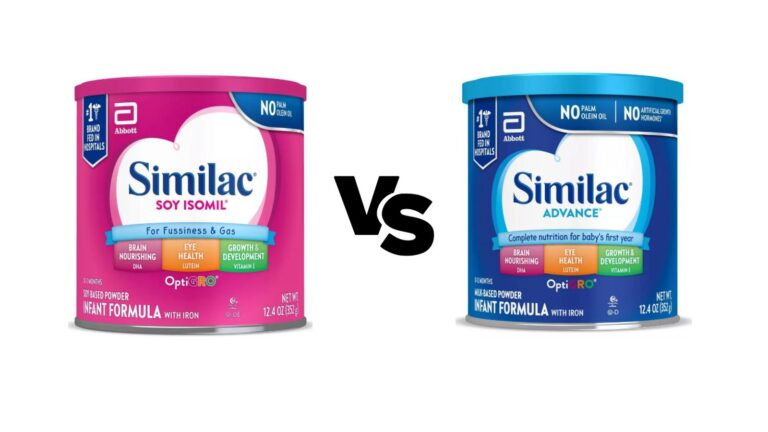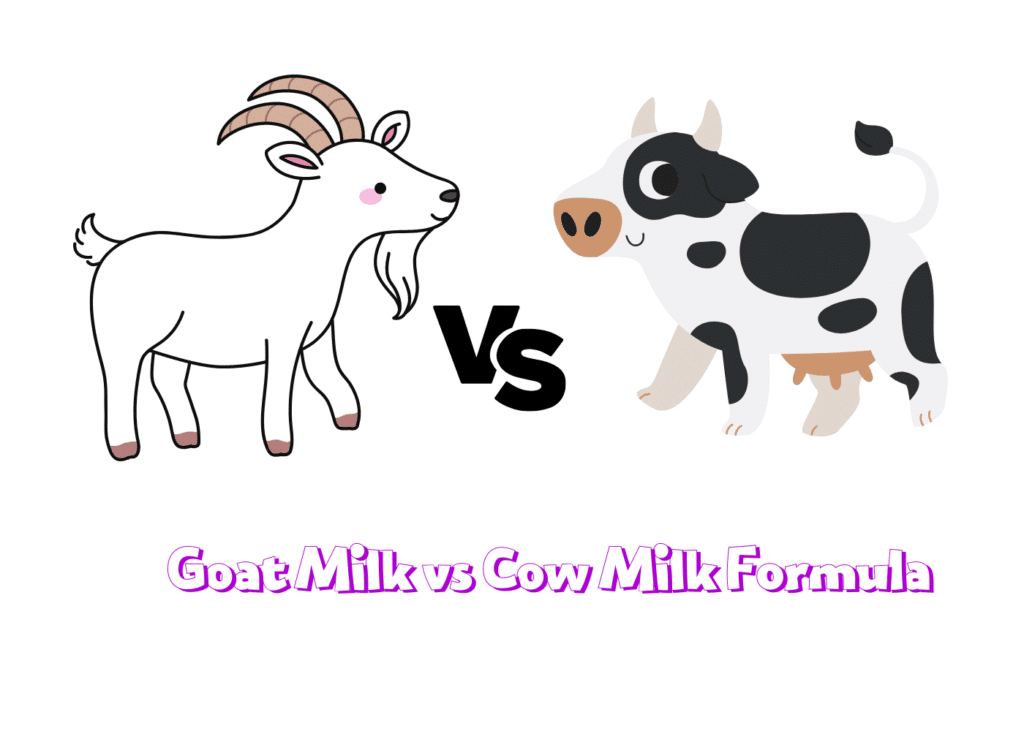
Selecting the right formula for your baby is an important decision that can impact their growth and development.
While cow milk has been the traditional choice for decades, goat milk is becoming increasingly popular as a viable alternative.
Compared to cow milk formula, goat milk formula is considered easier to digest and closer to breast milk in nutritional content.
Despite being a relatively new entrant in the market, goat milk formula has already amassed a loyal following of parents drawn to its unique benefits.
This article will delve into the differences between goat and cow milk formulas and provide insight into their nutritional composition, taste, and texture.
We will highlight the advantages and drawbacks and frequently asked questions to help you decide which formula best fits your baby.
Let’s get after it!
Related read: Best Goat Milk Formulas
Key takeaways
Goat Milk Formula Cow Milk Formula Easier to digest and closer in nutritional content to breast milk than cow milk formula Less easy to digest and nutritional content varies from breast milk High in A2 beta-casein protein, which is easier for some babies to digest who are intolerant to cow’s milk Contains A1 and A2 beta-casein proteins Better option for babies with sensitive digestive systems or those who are intolerant to cow’s milk protein Not suitable for babies with cow’s milk protein allergy or lactose intolerance Naturally homogenized, so no additional processing is needed to prevent fat separation Homogenization is needed to prevent fat separation More expensive and less available than cow’s More affordable and widely available than goat milk formula
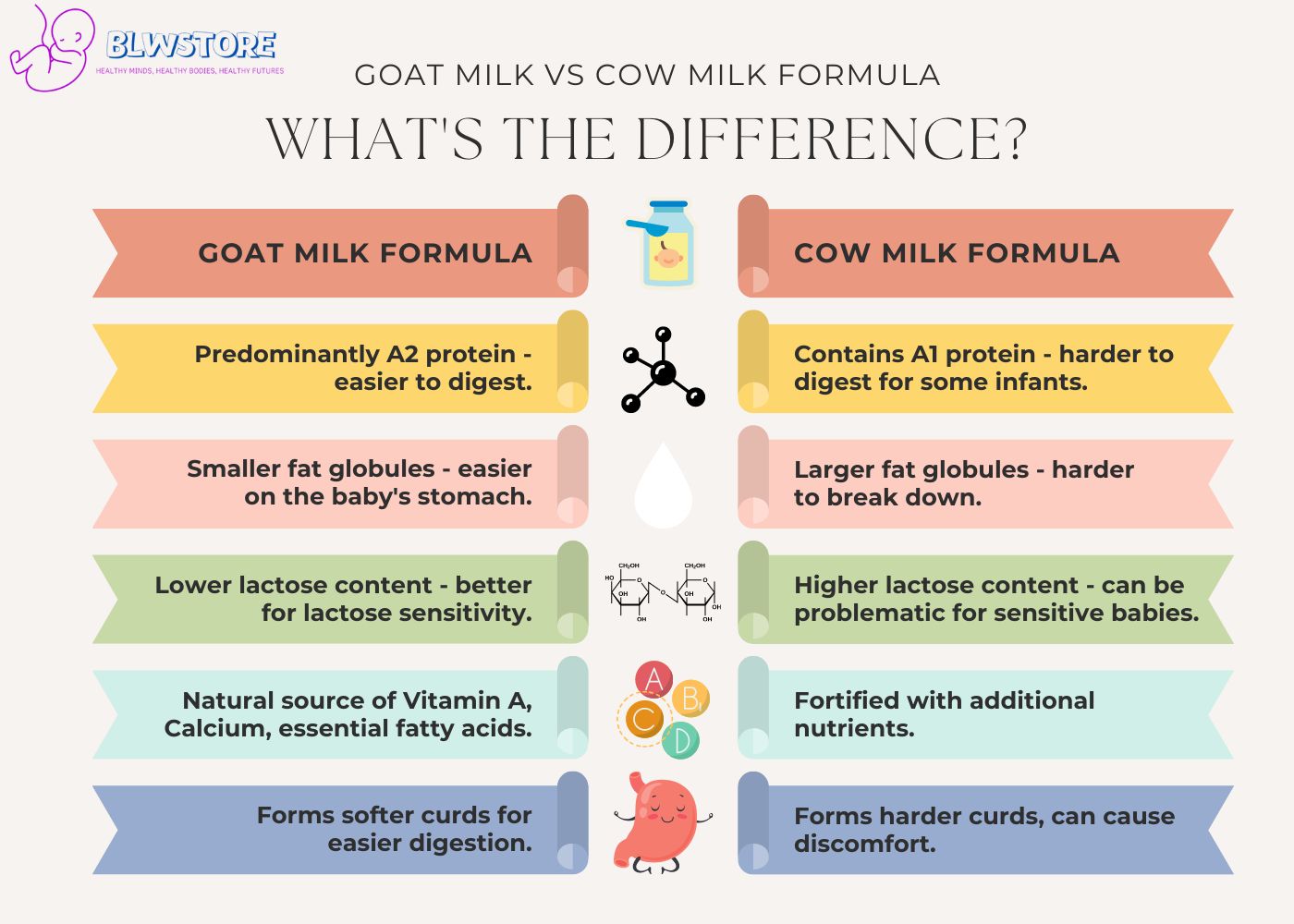
Our Personal and Short Answer
If you’re a parent who’s trying to decide which formula to start with, we highly recommend going with goat milk formula.
In our experience, it’s a fantastic option for babies since it’s composition is closer to breast milk than cow milk formula, making it easier to digest and reducing the risk of cow milk allergies.
Additionally, goat milk formula is naturally high in A2 beta-casein protein, which is easier for some babies to digest who are intolerant to cow’s milk.
Goat Milk Formula vs. Cow Milk Formula
Before we had Pablo, Maria and I thoroughly researched the types of baby formulas we could buy.
Like you reading this article, we also found ourselves torn between cow’s milk and goat’s milk formula.
After reading more than a dozen scientific articles and blogs and consulting our pediatrician (yes, we are typical crazy parents when it comes to nutrition), we had all the information we needed to make a decision, and that is what we want to share with you in an easily digestible way.
How is Goat Milk Formula made?
Goat milk formula is made from goat’s milk and contains essential nutrients required for either exclusively formula-fed or partially breastfed and formula-fed infants.
The production process for goat milk formula is similar to cow milk formula, with a few key differences.
The goat milk is pasteurized and homogenized to ensure it is safe and free of harmful bacteria. Essential vitamins and minerals are added to meet the nutritional needs of babies, and some formulas may also include prebiotics, probiotics, or other additives to support digestive health.
Goat milk formula is naturally high in goat milk protein, calcium, potassium, and vitamin A, essential for healthy infant growth and development.
Unlike cow’s milk formula, goat milk formula contains A2 milk protein, which is easier for some babies to digest who are intolerant to cow’s milk or are sensitive to lactose.
What is A2 milk?
A2 milk comes from cows that produce only the A2 beta-casein protein, which is one of the two types of beta-casein proteins found in cow’s milk.
Regular cow’s milk contains both A1 and A2 beta-casein proteins, which can be tough for some people to digest.
However, A2 milk comes from cows that only produce the A2 beta-casein protein, which some believe is easier to digest for people who are lactose intolerant or have difficulty digesting cow’s milk.
This is one of the reasons why goat milk formula is considered easier to digest for some babies compared to cow milk formula, as goat’s milk is naturally high in A2 beta-casein protein.
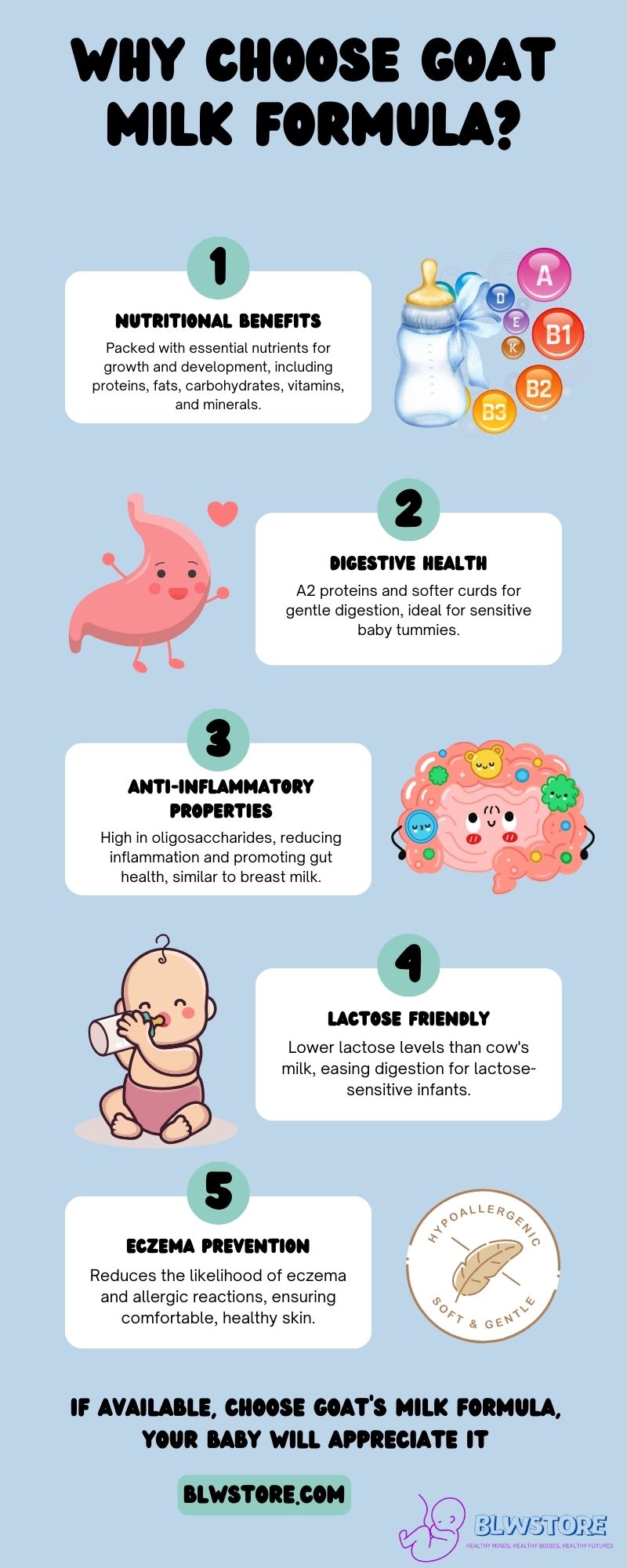
How is Cow Milk Formula made?
Cow milk formula is one of the most commonly used infant formulas and is made from cow’s milk.
The cow’s milk is processed and modified to resemble breast milk, ensuring it balances essential nutrients such as vitamins, minerals, proteins, and fats that babies require for healthy growth and development.
Cow milk contains more lactose than goat milk and has a different fat composition and protein. Most babies can tolerate cow’s milk formula well, but some babies may have trouble digesting either the proteins or the fats in cow’s milk, making it harder for those babies to digest.
Both cow milk formula and goat milk formula are fortified with vitamins and minerals that may not naturally occur in the milk, ensuring that the nutritional content of the formula is similar to breast milk.
It’s important to note that while cow milk formula is generally well-tolerated by most babies, some may have an allergy or sensitivity to cow’s milk protein, which can cause digestive issues or other health problems.
Nutritional Content Comparison Between Goat and Cow Milk Formula
Fats
While both types of formula provide essential fats necessary for a baby’s growth and development, the differences in fat content may make goat milk formula a better option for infants with digestive issues.
The fat content in goat milk formula and cow milk formula is different.
Goat milk formula has a different fatty acid composition than cow milk formula, with a higher proportion of medium-chain fatty acids, which are believed to be easier for some babies to digest.
Additionally, the fat globules in goat milk formula are smaller and more easily absorbed by the body than cow milk formula.
In contrast, cow milk formula has a different type of fat composition, with a higher proportion of long-chain fatty acids.
Proteins
Goat milk formula has a higher proportion of whey proteins and lower levels of casein proteins than cow milk formula.
Its naturally high A2 beta-casein protein content may make it easier to digest for some babies when compared to cow milk formula, which contains A1 casein protein, making it a better option for babies with sensitive digestive systems or those intolerant to cow’s milk protein.
Both goat and cow milk formulas for babies contain two types of milk proteins: whey and casein.
Casein makes up about 80% of the total proteins in regular goat or cow’s milk. Still, when converted into formula, the protein ratio is adjusted to match human breast milk, where the whey to casein ratio is about 50:50 or 60:40 in mature milk.
Whey is typically easier to digest, so PRE and Stage 1 formulas generally have more whey than Stage 2 and above formulas.
As a baby’s digestive system matures, it can digest more casein. The protein content in goat milk formula and cow milk formula is different.
Goat milk formula has a higher proportion of casein proteins and lower levels of whey proteins than cow milk formula. This difference in protein composition may make goat milk formula easier for some babies to digest because goat milk has more A2 protein.
In contrast, cow’s milk contains more whey protein and less casein protein than goat’s milk.
Two types of casein protein are found in milk – A1 and A2. Goat milk is naturally made up of A2 casein protein, while cow’s milk comprises A1.
Goat milk formula’s naturally high A2 beta-casein protein content may make it easier to digest for some babies when compared to cow milk formula, which contains A1 casein protein.
This may make goat milk formula a better option for babies with sensitive digestive systems or those keen on cow’s milk protein.
Carbohydrates
The carbohydrate content in goat and cow milk formulas is relatively similar.
Both types of formula contain lactose as their primary carbohydrate source.
However, cow milk formula generally contains a slightly higher amount of lactose than goat milk formula.
Vitamins and minerals
Infants get enough nutrients from both formula forms, and the nutritional differences between formula made with goat milk and cow milk are minimal.
Also, formula producers must adhere to strict nutrient content criteria established by regulatory organizations to ensure that both formula forms include the nutrients required for healthy growth and development.
The vital vitamins and minerals required for a baby’s growth and development are added to goat and cow milk.
However, depending on the manufacturer and the exact formula type, the precise nutrient content of each formula can change.
In general, cow milk contains more calcium, vitamin D, and vitamin B12 than goat milk.
On the other hand, goat milk formula has higher levels of copper, selenium, and vitamin A than cow milk formula.
Consistency and Taste differences
Goat and cow milk formulas have differences in taste and consistency due to variations in composition.
Fresh goat milk is creamier and has a tangier and sweeter taste compared to cow milk, and it has a more delicate and slightly gamey aftertaste.
Additionally, goat milk formula has a naturally homogenized texture, while cow milk formula undergoes the homogenization process.
Goat milk formula looks whiter than cow milk formula due to the efficient conversion of carotene to Vitamin A in goats.
Taste is subjective, so some babies may prefer one over the other, and it’s essential to consider your baby’s individual preferences before making any decision.
If you are switching from cow milk to goat milk formula, it may take a while for your baby to get used to the new taste, but eventually, they will adjust.
What are the benefits of Goat Milk Formula Vs. Cow Milk Formula?
- Easier to digest for some babies due to naturally high levels of A2 beta-casein protein
- May be a better option for babies with sensitive digestive systems or those who are intolerant to cow’s milk protein
- Naturally homogenized, so no need for additional processing to prevent fat separation
- Has a slightly sweeter taste than cow milk formula, which some babies may prefer
- Goat milk formula may be a good option for babies who are partially breastfed, as the composition of goat milk is closer to human milk than cow milk
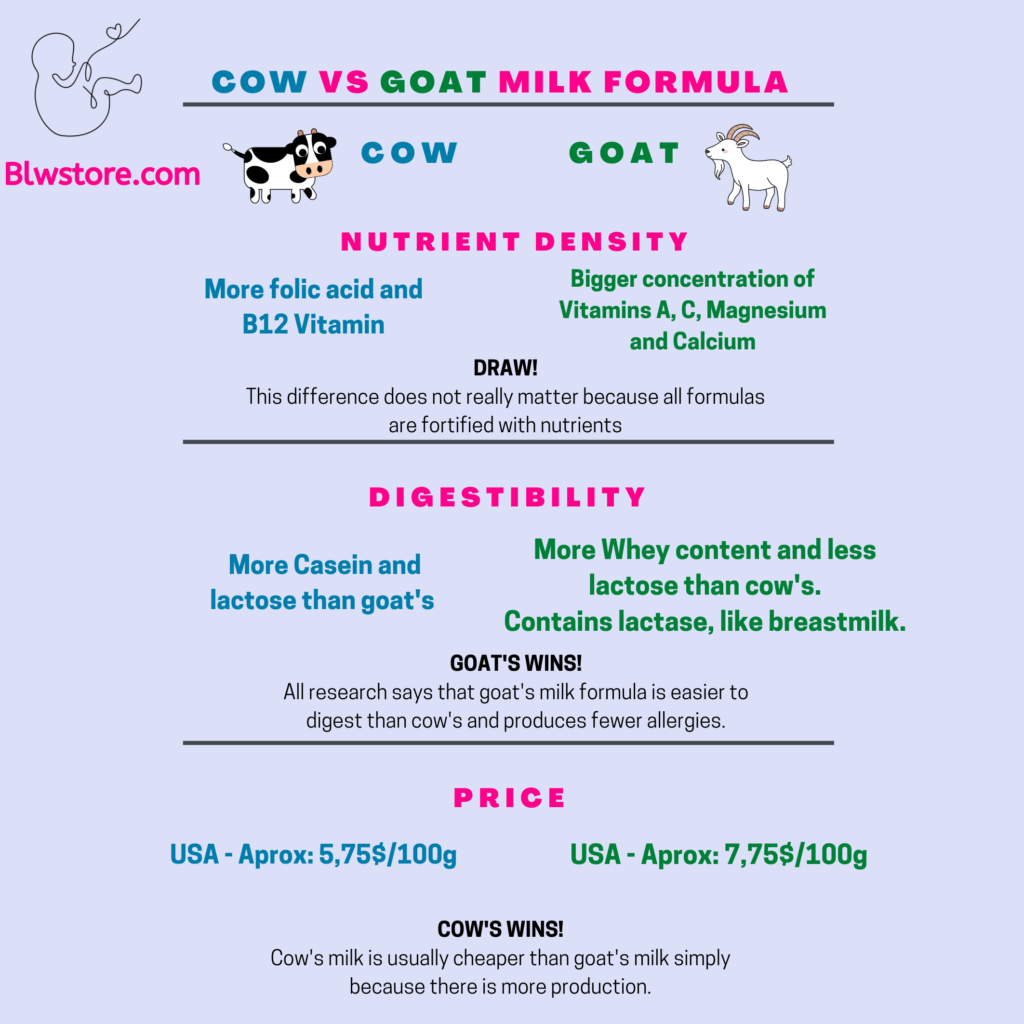
Which formula should you choose, Cow Milk or Goat Milk Formula?
Choose cow’s milk formula if:
- Your baby has no known sensitivities or allergies to cow’s milk protein or lactose.
- You want a formula that is widely available and easy to find.
- You want a formula that is generally more affordable than goat milk formula.
- You want a formula with a mild taste, smell, and creamy consistency.
Choose goat’s milk formula if:
- Your baby has difficulty digesting cow milk formula or has a milk protein allergy.
- Your baby is sensitive to lactose, as goat milk contains less lactose than cow milk.
- You want a formula that is naturally high in A2 beta-casein protein, which may be easier for some babies to digest.
- You prefer a formula with a slightly sweeter taste.
- You are looking for a formula that is naturally homogenized and doesn’t require additional processing to prevent fat separation.
Drawbacks of Goat Milk Formula
- Cost: Goat milk formula is generally more expensive than cow milk formula, and may not be covered by insurance. This can make it difficult for some families to afford, especially if their baby requires it due to digestive issues or allergies.
- Availability: Goat milk formula may be harder to find in stores than cow milk formula. While some stores carry it, it may not be as widely available as cow milk formula.
- Taste: Goat milk formula has a distinct taste that may be off-putting to some babies. This may require some adjustment for babies who are used to the taste of cow milk formula.
Are there any alternatives to Cow milk and Goat milk formulas?
Soy Formulas: Made from soy protein, soy formula is an alternative for babies allergic to cow’s milk or lactose intolerant. Soy formula is also good for families with vegetarian or vegan diets. However, soy formulas are not recommended for babies younger than six months.
Hydrolyzed Formulas: Hydrolyzed formula is a formula where the proteins are broken down into smaller pieces, making them easier for babies to digest. This formula is typically recommended for babies allergic to cow or soy proteins.
Plant-based formula: Plant-based formula is a viable choice for parents looking for alternatives to dairy and animal products for their infants. To mirror the nutritional profile of breast milk, these formulas are often produced from soy, rice, or oat milk and fortified with minerals like calcium, iron, and vitamin D.
FAQ about Goat milk and Cow milk formulas
Is organic goat milk or cow milk formula worth it?
For some parents like us who want to ensure that their baby gets a product free of dangerous chemicals, hormones, and antibiotics, organic goat or cow milk formula may be worthwhile.
The use of high-quality, organic components is ensured by the tight rules and requirements that organic formulae must meet.
Yet, organic formulas often cost more than regular formulas. If you’re considering giving your infant organic formula, research and pick a recognized brand.
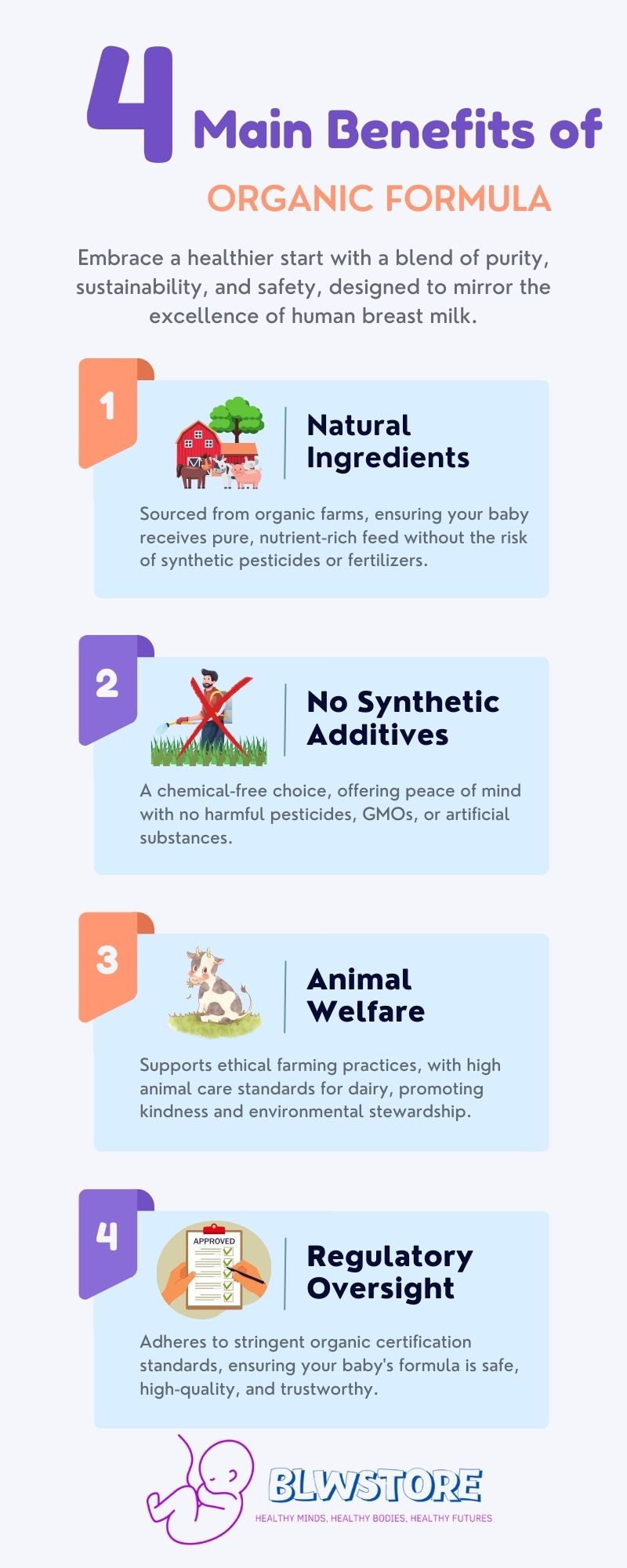
Is goat milk formula FDA-approved?
Yes, goat milk formula sold in the US is FDA-regulated, just like cow milk formula.
The FDA requires all infant formula, including goat milk, to be manufactured and processed to minimize safety risks and contamination.
Although not all European organic formula brands are FDA-approved, they are still held to high safety and quality standards. In fact, European formulas undergo even stricter testing than US formulas, ensuring that they meet or exceed safety and quality regulations.
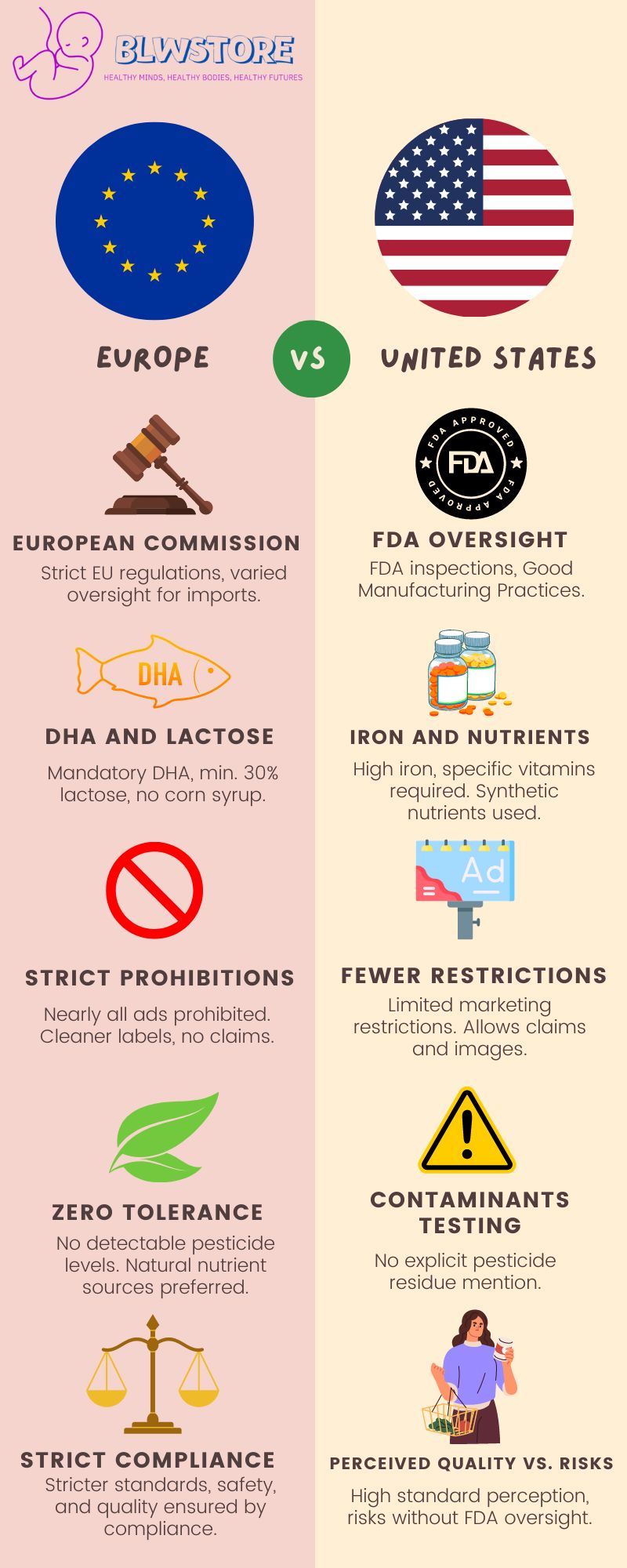
What formula is closest to breastmilk?
Organic goat milk formulas tend to be the closest match in composition to breast milk.
Does goat milk formula taste different?
Yes, goat milk formula tastes different from cow’s milk.
It is described as having a creamier, fresher, but also slightly gamier taste than cow’s milk.
What are the disadvantages of goat milk formula for babies?
- Slightly more difficult to find and less available in general
- It is usually more expensive
- Not every baby likes its taste
How to switch from cow milk formula to goat milk formula?
There is no reason why you cannot transition directly. Some parents prefer doing it slowly and mixing the formulas, but it’s unnecessary.
What you can do is to gradually increase the amount of the new formula while decreasing the amount of the old formula.
For example, you can start by replacing one ounce of cow milk formula in each bottle with one ounce of goat milk formula.
Over several days, gradually increase the amount of goat milk formula and decrease the amount of cow milk formula until you are feeding only goat milk formula.
Last Words
Choosing the right formula is never easy, so be patient, consistent, and persevere.
Goat milk baby formula is a safer alternative for babies who experience allergic reactions to cow milk proteins and lactose intolerance while also being easier to digest overall.
It contains natural ingredients, such as amino acids, essential fatty acids, folic acid, and vitamins B, C, and E, which play a crucial role in your child’s nutritional needs and healthy development.
Give goat milk formula a try, and be amazed!
Happy feeding!
We’re Maria and Alberto, a married couple and educators who are nutrition enthusiasts. Even before we had kids, we were already crazy about nutrition.
We’d read scientific articles, watch videos from nutritionists, and spend hours listening to nutrition podcasts.
Today, we continue doing this, but in a different way, as we’ve learned to sift through the noise and trends. Nutrition, like any other field of knowledge, the more you read and learn, the more you develop a comprehensive understanding of reality, and that’s what has happened to us.
Before having our first child, we focused on learning everything we could about child nutrition, using the same techniques we had already employed, backed by our extensive knowledge in nutrition.
Our mission is to help other parents with their children’s nutrition, to help them become the best versions of themselves.
If we are what we eat and drink, which is absolutely true, let’s do it right!



